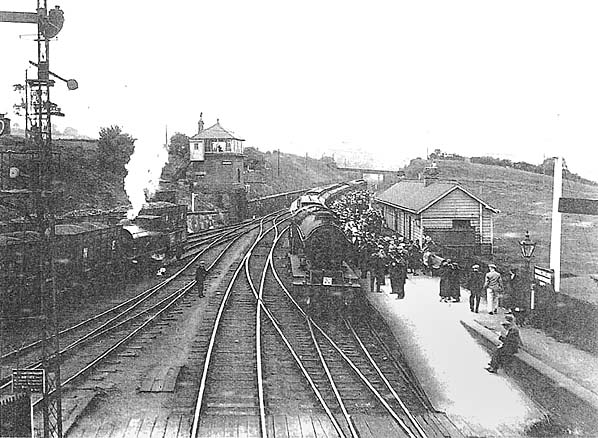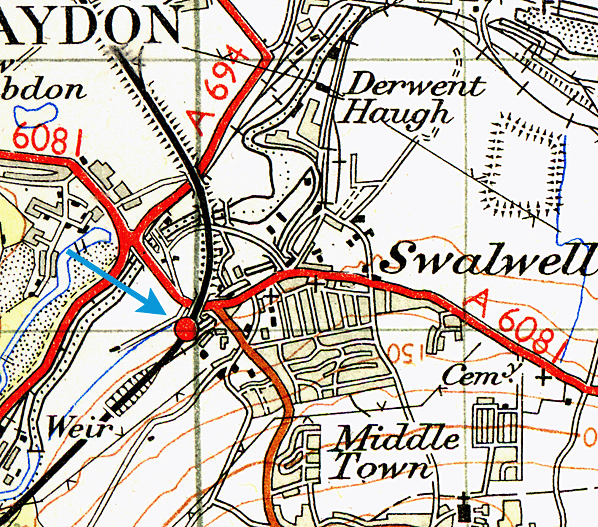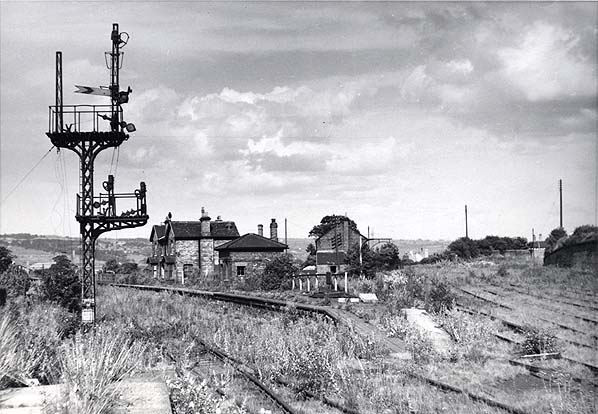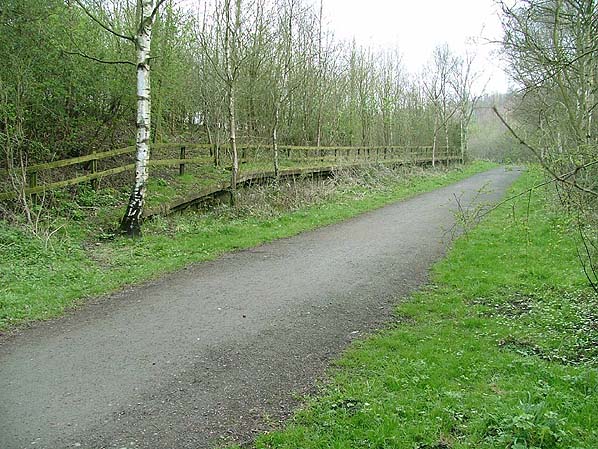|
Notes: Work on the Derwent Valley Railway started in 1865 and
the line was opened on 2nd December 1867 Four
viaducts were constructed and a deep, 800 metres long cutting
was dug near Rowlands Gill. The Nine Arches Viaduct was one of
the major engineering feats of the railway; it is five hundred
feet long and was built because the Earl of Strathmore would not
allow the railway to pass through the Gibside Estate.
Stations were built at Blackhill, Shotley Bridge, Ebchester,
High Westwood, Lintz Green, Rowlands Gill and Swalwell. The line
was single track between Blackhill and Lintz Green and double
rack between Lintz Green and the junction at Derwenthaugh. At
its peak in 1914 the railway was carrying over half a million
passengers a year with a regular goods traffic of timber, bricks
and coal to Newcastle and iron ore to Consett.
The line also has a gruesome claim to fame in 1911 Lintz Green
station was the scene of the inexplicable
murder of the stationmaster by an unknown gunman the crime
never solved.
By the 1920's, buses started to take the passengers. Freight
fared better, continuing to deliver to collieries, coke-ovens,
brickworks, paper-mills, dairy farms and the livestock mart at
Blackhill, but even the freight traffic declined after W.W.II.
High Westwood Station was closed in 1942 while the remaining
stations survived into the 1950's but passenger numbers failed
to recover after the war and one by one the stations closed. Shotley
Bridge and Ebchester closed in September 1953, Swalwell and Lintz
Green followed in December 1953. Rowlands Gill closed in February
1954 and Blackhill survived until May 1955. As road traffic became
more efficient the freight service continued to decline until
the line finally closed completely on 11th November 1963
The track was lifted in 1964 and for many years little was done
to the line until Durham County Council developed it as a country
park. The viaducts and bridges were repaired and the trackbed
has now become an excellent country
path and cycle route.
At Lydgetts Junction near Consett, the Derwent Valley route links
with the Lanchester Valley Railway Path, Waskerley Way, and the
Sustrans Consett-Sunderland cycle path, the latter two form part
of the C2C (Sea to Sea) Cycle Route.
For more information about Swalwell Station see the Swalwell
web site. Route map drawn by Alan Young.
To see the other
stations on the Derwent Valley line click on the station name:
Blackhill, Shotley
Bridge, Ebchester,
High Westwood,
Lintz Green &
Rowlands Gill
|





 Home Page
Home Page 

old_thumb7.jpg)







